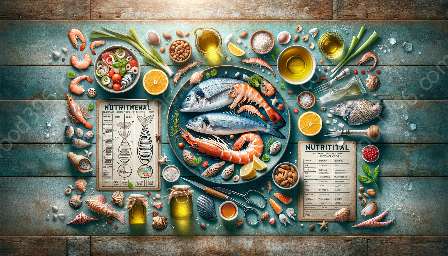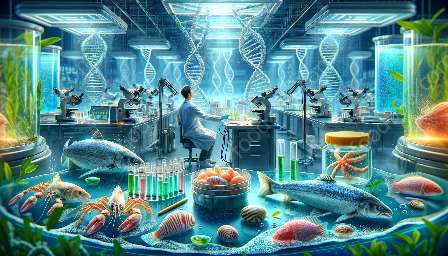Seafood traceability and authenticity are crucial components of the seafood industry, impacting everything from consumer safety to environmental sustainability. In this comprehensive topic cluster, we will delve into the significance of traceability and authenticity in seafood, how it relates to seafood science, and the implications for the food & drink sector. From examining the challenges and complexities to exploring technological advancements that are driving change, we will provide an in-depth exploration of the pivotal role that traceability and authenticity play in the seafood supply chain.
The Importance of Seafood Traceability and Authenticity
Seafood traceability involves tracking the journey of seafood products throughout the supply chain, from ocean to consumer. It provides transparency and accountability, allowing for the verification of the product's origin, processing methods, and shipping details. Authenticity, on the other hand, focuses on ensuring that the seafood being sold is accurately labeled and represents the species stated, protecting consumers from fraud and mislabeling.
Significance in Seafood Science
Seafood traceability and authenticity are integral to seafood science, as they contribute to the overall safety and quality of seafood products. By maintaining accurate records of the supply chain, including harvesting, handling, and processing, scientists can better analyze and mitigate potential risks, such as contamination and adulteration. Additionally, this data is essential for research purposes, aiding in the development of improved preservation and packaging techniques.
Impact on the Food & Drink Industry
The impact of seafood traceability and authenticity extends to the food & drink industry, where consumers demand transparency and ethical sourcing practices. Businesses that prioritize traceability and authenticity can gain a competitive edge by providing assurances of quality and sustainability. Additionally, regulatory bodies often require detailed traceability documentation to ensure compliance with food safety standards and prevent fraudulent practices.
Challenges and Complexities
While the concept of seafood traceability and authenticity is straightforward, implementing effective systems presents various challenges and complexities. Some of the key obstacles include the vast scope of the seafood supply chain, potential for fraud and mislabeling, differing regulatory standards across regions, and the need for international cooperation to establish a global framework.
Technological Advancements
Advancements in technology are revolutionizing seafood traceability and authenticity. From blockchain and RFID (Radio-Frequency Identification) to DNA testing and digital platforms, these innovations are enabling greater transparency and efficiency in the tracking and verification of seafood products. These technologies offer real-time data access, enhance accountability, and facilitate rapid response capabilities in the event of contamination or recalls.
Conclusion
Seafood traceability and authenticity are essential for upholding the safety, quality, and integrity of seafood products. The integration of science, industry standards, and technological innovations plays a pivotal role in meeting the increasing demand for transparent and sustainable seafood sourcing. As we continue to navigate the complexities of the seafood supply chain, it becomes evident that traceability and authenticity are fundamental pillars in building consumer trust and ensuring the long-term viability of the seafood industry.




















